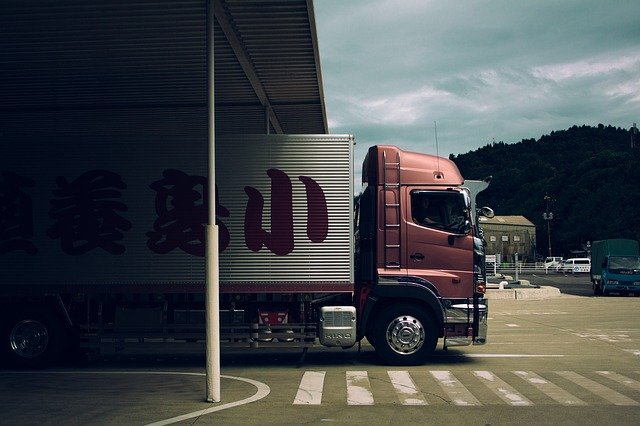In a vast and developed world, the common man’s life works as smooth as butter due to the multi-dimensional growth across various industries. Cars, phones, houses, appliances, and other items of utility and necessity aside, the world is heavily dependent on technology to get through each day. One such technology that goes unnoticed but has an impending presence in all our lives is Telematics. Coming to form as a rather important amalgamation of telecommunication and informatics, telematics works towards making communication, transportation, and logistical work easier and practical through effective data collection, transmission, and interpretation.
WHAT IS TELEMATICS?
The tipping point of telematics stems from the introduction to GPS, which stands for Global Positioning System, which helps people navigate. With the introduction of machine-to-machine communication birthed by the Greek inventor and scientist Theodore G. Paraskevakos, many research programs were established to understand the true potential of the model, thus leading to the formal introduction of the word “telematics,” translated from the French word ‘télématique,’ which was coined to explain the computerized state of information.
Telematics has enabled people to track down their movement, find locations, and check on transport and shipments from the comfort of a monitor. Telematics allows wireless transmission of data from one place to another, explaining its expansive presence in the transport, fleet management, and logistics industry. Businesses have benefited from the practicality of the technology through effortless and effective coordination between the hardware and software components.
HOW DOES IT WORK?
A standard vehicular telematics setup comprises a black box, a server, and software. A black box serves as the collection point of data from a vehicle, which is processed and transmitted through the same processing software that uses behavioral analytics to best interpret the data for the end-user. This software uses appropriated algorithms on historical data gathered from the black box to gain insights that can be used to rectify and optimize the vehicle’s functioning.
The black box is responsible for tracking down information regarding fuel consumption, mileage, time and distance proportion, real-time location feed, speed, and various other vehicular entities. Essentially, the device collects and stores data from the vehicle, which is relayed to the central server for analytics. The data is processed and worked upon to make essential changes in the regimen. There is less slack in fuel usage, transit time, behavioral hiccups, thus increasing the production rate while consuming less time and human effort. The digital and tech-based application of telematics also reduces the scope of human errors in the long run.
WHY CHOOSE TELEMATICS?
The use of telematics has helped streamline operational and logistical hiccups across all industries. While making information exchange and fleet management easier, the technology comes with many more benefits.
1. Smart and improved security: Centralized and digitized fleet management through telematics enables the end-user to be aware of a driver’s behavior regarding rash driving, overspeeding and harsh braking. The data collected from vehicles can help coach the drivers not meeting the safety requirements.
2. Reduced fuel costs: Constructive comparison between the time consumed to complete journeys and evaluating routes and idle time spent by a vehicle helps fleet managers promptly deal with issues and instances that lead to wastage of fuel, thus ensuring conscious use of the same and less expenditure.
3. Elevated productivity: The use of navigation applications and feedback from previous trips helps drivers avoid routes that can cause a longer trip time, ensuring faster deliveries. The use of the Internet also helps identify important resources on the designated route.
4. Easier maintenance: Using data collected from various parts of the vehicle through telematics systems helps determine and understand technical issues with vehicles of the fleet, thus making diagnostics and their cure easier through preventive measures. Telematics helps fleet managers to keep a check on engine diagnostics, including battery voltage, coolant temperature, valve issues, oxygen sensor problems, and more.
TELEMATICS AND FLEET MANAGEMENT
Owing to the similarity of functions, a lot of people tend to mistake fleet management with telematics, which isn’t the case. Telematics and fleet management are two systems that work hand in hand, ensuring effective maintenance of an entity’s transport and logistics. While telematics collects and transmits data from individual vehicles, a fleet management system is responsible for reading and analyzing this data which eventually helps in correcting errors related to the fleet and its parts, thus enforcing better productivity.
While telematics can report and help rectify issues with a singular vehicle, fleet management looks after the entire fleet, thus working as the larger unit. An effective pairing of telematics and fleet management thus provides the best care for a fleet and eventually the logistics of an organization.
Telematics has drastically lowered the scope of shortcomings that can hinder the effective functioning of various industries and brought in transparency in the process that further helps in streamlined communication, thus affecting the rate of accountability, efficiency, and productivity. Having revolutionized the transport and logistic industry through innovations in each step, telematics will only continue to prosper and expand into territories yet uncharted.

